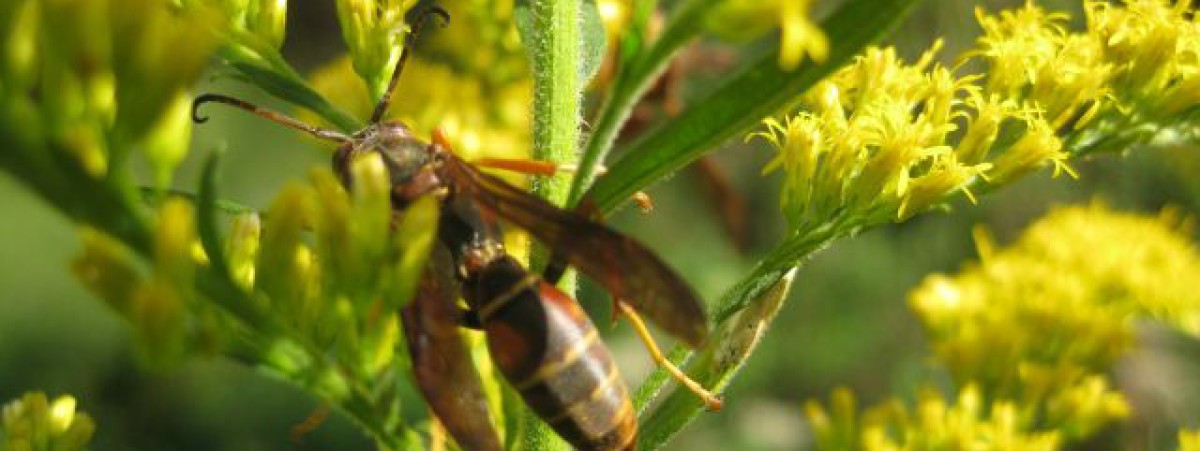With shortened sun hours and fall in temperatures, my summer vegetables are yielding, as too are the pests which feasted on the chard, collards and greens. So I have been clearing the raised beds, adding compost and cool season seeds such as kale, spinach (after 1 week germinating stint in the refrigerator), and turnip greens. Also lettuce and radishes for harvesting before it gets too cold. I had packets of several years old seed and not knowing which was viable but knowing that with each passing year they were becoming less so, I used them all to seed rows. Now, a few weeks later I know which were too old and rather than thinning the overcrowded rows I am transplanting from the overcrowded rows to the bare rows.
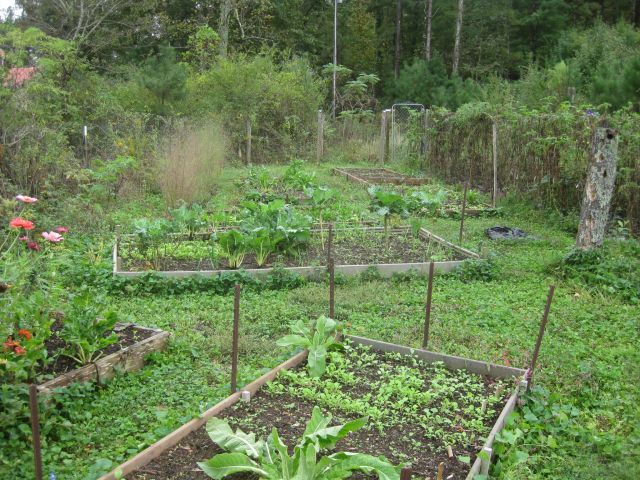
I left in place the pest shredded collard and chard and I have been rewarded by their luxuriant response to the plentiful rains, cooler temps and reduced pest pressure.

The arugula grows vigorously and is a welcome supplement both to fresh salads and sauteed with the collard, mustard and kale.

I have steadily removed the tomato cages and stored under cover. A few remain with bearing tomatoes – perhaps they will ripen? And I can wait since the area they occupy will, after composting, be used for planting out garlic and garlic can go into the ground later, while my cool season seeds had to go in earlier to germinate and benefit as much as possible from the dwindling sunlight.

Apart from removing the summer vegetables I have not had much hassle with weeds. I am more disciplined and weed during the summer and try cover the areas with vegetable growth to forestall the arrival of weeds. So much less work and a better result than previous years.
In the orchard which was overcrowded with weeds, I have been at work clearing the growth and pruning the trees. Last year I used wires to hold down and spread the branches and pruned the vertical apical growths. I am pleased the branches have stayed horizontally in place after the removal of the wires though with some trees, especially the pears, there are a number of vertical growths I have to remove. I am reusing the wires elsewhere and the best time to train the trees is when they are young and supple. Here is a young apple tree whose vertical branches have been splayed horizontal with the recycled wires.

It’s all about observing what’s going on and attending timely. Elsewhere in a wooded area I planted out oak saplings a few years ago and they have been outshaded by fast growing pines and tulip poplars and there too I have been busy with pruning saw (and also chainsaw) cutting down the less desirable trees and “releasing” the oak trees.
In the orchard area and at the top of the hill I have been weeding growing areas and seeding with winter rye and Austrian winter peas for cover crops. And I have been seeding with clover around the bases of my blueberry plants. So plenty of work but with the cool weather and occasional drizzles, an exhilarating time to be out doors.
Unusual sightings
I mentioned previously that my rat and mouse problem (more rat than mouse) in the coop has been solved with the arrival of a large black snake. I have not seen the black rat snake again but I am sure it patrols the area, perhaps in the night and certainly rat droppings have disappeared from the coop ledges and the feed bowls. But I did spot another largish snake about 5 feet long, probably an eastern king snake and was able to snap it (below).

I really don’t understand those who wish to kill these non venomous snakes. Apart from ridding mice and rats they also devour the venomous smaller snakes. As long as they don’t take a liking to the chickens eggs they are most welcome.
We noticed an unusual sight.
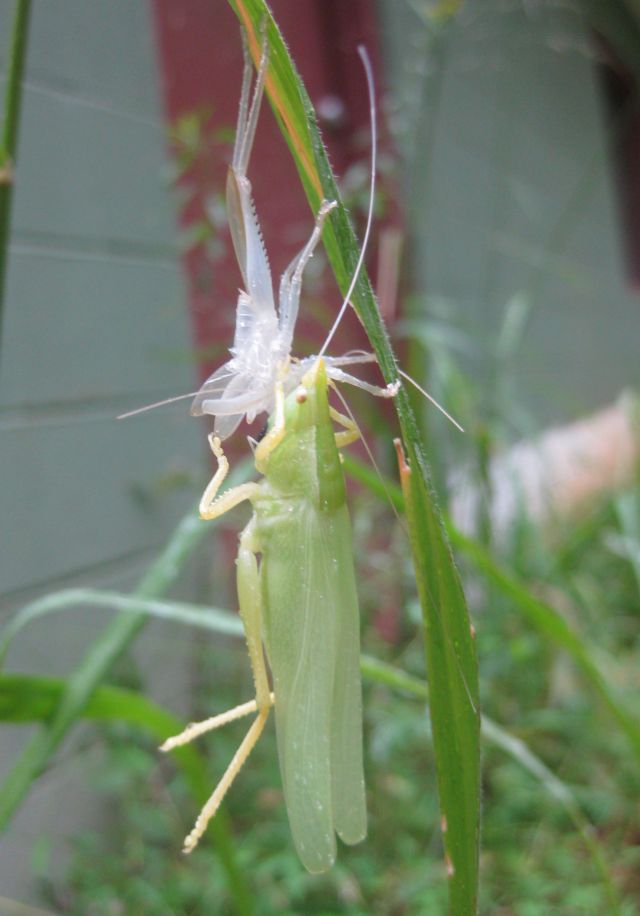
The white insect above was attached to the grass blade, the one below was suspended held by the one above, or so it seemed. But why was the one above white? Closer examination indicated that the predator was the green katydid and it presumably had sucked out the nutrients of the cricket (which looked skeletally white). Interesting that the cricket was still attached to the grass blade.
Spiders abound and have webs across my path in the woods, so I carry a stick before me to avoid being wrapped in their webs. Here is one fellow I almost walked into.

And here is a spider with I think, eggs on its back.
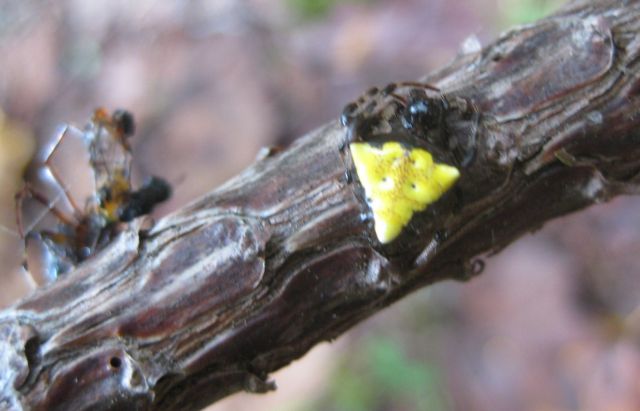
And here is quite a large fellow near the house.
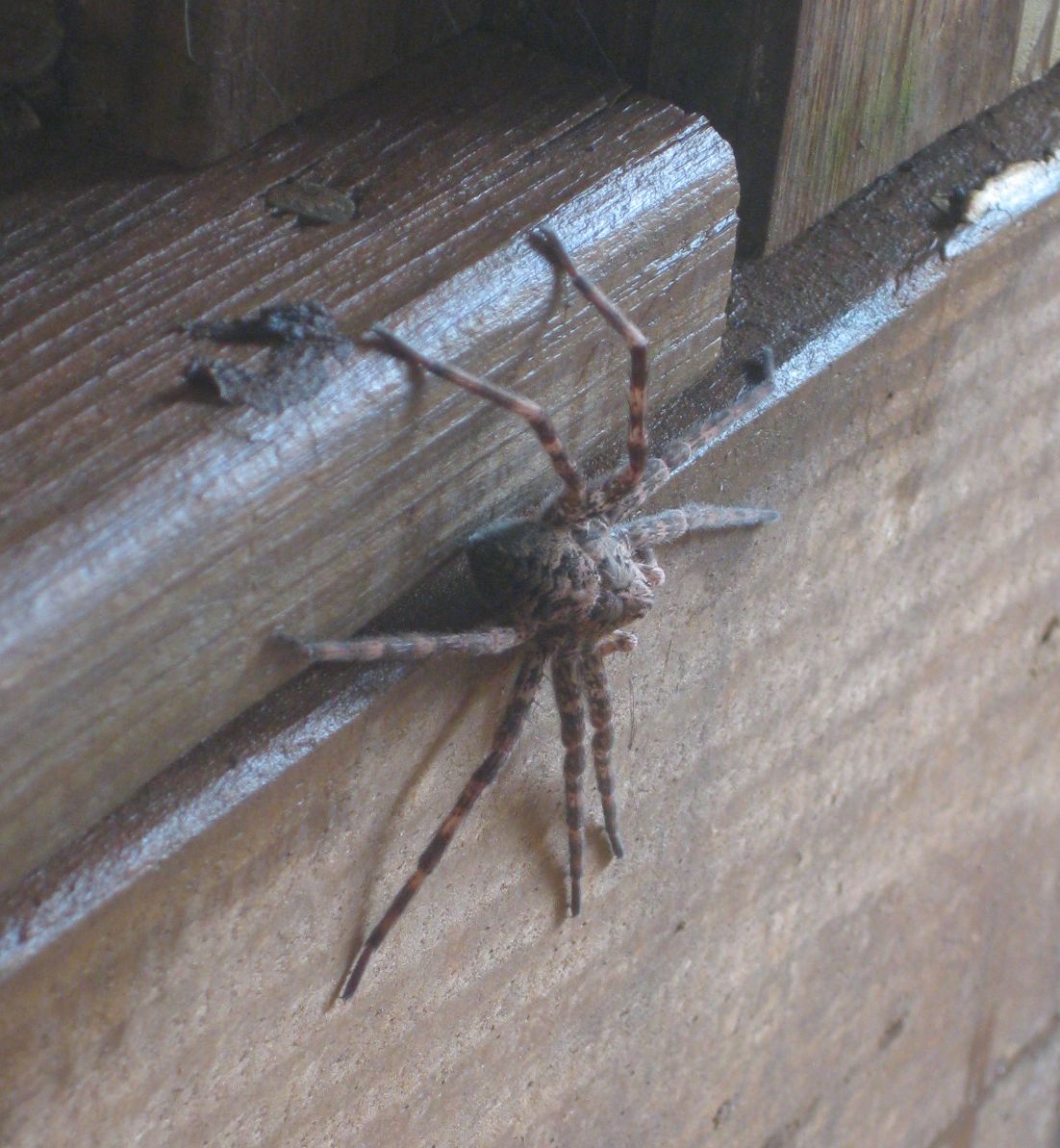
The bees are hard at work on the goldenrod and, with all the rain the past week, mushrooms of different sizes, colors and shapes, are emerging.
